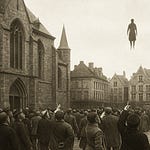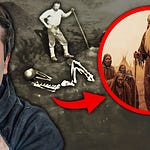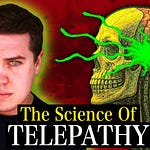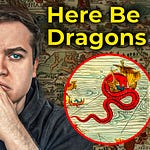I investigate the early Mormon visionary events and the theory that psychedelics may have played a role in those experiences. This video covers the 1836 Kirtland Temple dedication, eyewitness accounts of fire, angels, and trances, the Smith family’s background in folk magic and herbal practices, and the controlled use of wine and oils in early rituals. Researcher Alex Criddle provides context on why some scholars think psychoactive plants may have played a role in early Latter-day Saint history.
I highly encourage you to take a look at the top 2 sources below, along with my full interview of Alex and his Substack. I only had time to cover some of the evidence available but it is deeply interesting and grounded. You will enjoy it.
Sources:
https://www.semanticscholar.org/reader/39aab10ff7ef8d07f48d51f28f1bf75c20608bd9
https://www.dialoguejournal.com/wp-content/uploads/sbi/articles/Dialogue_V27N03_131.pdf
- ’s Substack
https://scripturalmormonism.blogspot.com/2021/11/jesse-jasper-mosss-recollections-of-his.html
https://www.amazon.com/Early-Mormonism-Magic-World-View/dp/1560850892
https://us.amazon.com/Psychedelic-History-Mormonism-Magic-Drugs/dp/0578957736
Transcript:
Taylor McMahon: On a peaceful day in 1836, a brand new temple opened in the small town of Kirtland, Ohio. Hundreds crowded inside for its dedication. The day began like any normal Church service, but when the night fell, a different type of ritual began. A small group of chosen congregants washed their bodies. Thick oils were pressed onto their skin and they drank sacramental wine.
Then it started. Fire fell from the sky. Angels appeared. The room erupted into shouts and songs and tongues. Entire crowds collapsed into trances. And according to them, they saw heaven. Eyewitnesses swore that the angels of God appeared unto them and that a pillar of fire rested down upon the temple.
Joseph Smith, their leader, had promised them “Tonight, you will see God” and he delivered. To outsiders, this story has always sounded absurd. The foundations of Mormonism have long been mocked, and to be fair, the story is strange, but the evidence suggests that something did happen in that temple. Something bizarre. Something far stranger than most can imagine.
The question isn’t whether visions erupted that night. The real question is what caused them? That’s what we’re going to uncover.
This is the psychedelic origins of Mormonism.
These claims may sound wild, but I’m not alone in this line of thinking. Some researchers have begun to connect the dots between early Mormon visions and psychedelics.
One of them is Alex Criddle.
Alex Criddle: I’m Alex. I’ve been studying psychedelics for a decade now. I got introduced to them actually through Ketamine assisted psychotherapy for my depression anxiety. And under them, I was having visions like the early Saints did, and I went, holy shit, I think Joseph Smith was on drugs. And kind of launched into the research because I’d already been involved in Mormon academia. I work as a Mormon history researcher right now, and I have for a few years.
Taylor McMahon: But this isn’t just a story of anecdotes. There are real reasons to believe that early Mormons use psychedelics. But to understand that, we need to go back to the beginning and learn about its founder.
Joseph Smith was born in 1805 in Vermont, but he was raised in upstate New York in the burned over district. And this region was the epicenter of the Second Great Awakening, and it was called the burned over district because it was scorched by revival after revival.
Then at age 14, Joseph walked into the woods to ask God which church was true, and that’s when the heavens opened. And as Joseph tells it, God the Father and Jesus Christ stood before him. They told him that none of the churches were true and that he must start his own. Later, an angel named Moroni appeared and told him about golden plates hidden inside of a nearby hill.
On those plates were the record of an ancient civilization in America. Joseph claimed that he had been chosen to translate them. And from there, he dictated what would become the Book of Mormon. And that’s the story that most people know. A boy prophet, golden plates and a new scripture. But if you look closer at the soil he grew up in, and the visions of his family, another picture starts to take shape.
A psychedelic family that created a psychedelic church. In that world of trances and visions, Joseph grew up hearing stories in his own household. Dreams and cures and old symbols. The Smith Family tales stretch back generations, and those stories shaped Joseph’s imagination long before he ever stepped foot into a revival tent.
But it was Joseph’s father’s dreams that actually ended up being recorded into the Book of Mormon itself.
Alex Criddle: Then Joseph’s father, Joseph Sr. has a series of seven visions. One of these dreams that Joseph Sr has actually is incredibly reminiscent of a vision that’s in the Book of Mormon. So Joseph Sr has a dream where he has this spirit guide who shows up, presumably after partaking of a substance, which I’ll get to in a second. And this guide kind of takes him through this scary landscape and kind of teaches him things and leads him to this box. And in this box there is a piece of white fruit that he describes as like a chestnut burr.
He opens it up and there’s like white seeds in it, and he partakes of the fruit and it makes him happy. The spirit guide tells him that this is, you know, the love of God. This is like wisdom personified. I actually think that Joseph Sr’s dreams map onto a datura experience, because the way he describes it is this spiky fruit.
Taylor McMahon: And it wasn’t only Joseph Sr who had visions, his mother, Lucy Mack, and his maternal grandfather, Solomon Mack, both had life-changing encounters of their own. Beyond Joseph’s psychedelic heritage, he also inherited his family’s fascination with the occult. And at the center of their fascination was Freemasonry.
Joseph’s father was deeply involved. In both Masonry and the occult. He believed that Joseph’s birth was prophetic. He thought that Joseph was a child marked for hidden knowledge. And at the time, mind altering substances were not unusual in Masonic rituals. They would blend symbols and psychoactive herbs to open the mind.
Alex Criddle: Most of his ideas come from Christian occultism, Platonism, Masonry. Freemasonry was, um, this brotherhood that kind of started sometime in like the sixteen early seventeen hundreds. The founding myth of free masonry is Hiram Abiff. Hiram Abiff was this Mason who was working on Solomon’s temple from the Bible, as they were building it.
He had this secret knowledge and wisdom. And he was killed by other masons, and that wisdom was kind of lost. And so Masonry is basically trying to restore that lost wisdom. The same type of thing that Joseph was doing, trying to restore the lost wisdom of the ancient religions.
And they had these series of rituals and ceremonies to initiate people into masonry to give them secret keys, secret knowledge. Eventually Joseph, he comes and joins free masonry and starts his own lodge in Nauvoo. But before that, he’s developing this temple ceremony. Very similar to the Masonic rituals and initiations
Taylor McMahon: Historians have documented that the Smith family owned several occult books, including Francis Barrett’s The Magus, and Ebenezer Sibly’s Occult Sciences.
These books were manuals for ritual practice with instructions on how to summon spirits and draw protective circles and prepare plants for visions. They even described how to burn nightshade or datura to summon spirits. Joseph carried those ideas into the objects that he kept. He owned a ceremonial cane carved with a serpent from Eden. It also bore these symbols of Saturn and Jupiter, along with an inscription that read “Jupiter Reigns Over Joseph Smith”. But Joseph’s world wasn’t shaped by symbols alone. The same books that taught him about planets and spirits also spoke about plants. Herbs that could heal the body and open the mind.
And in the early 1800s, those plants were everywhere. Nightshades, like datura, were prescribed for epilepsy and nausea and eye problems, and they were even used as a cheap substitute for opium. The form of psychedelic nightshade that was used in medicine grew on nearly every single corner in the northeast.
It was freely available to everyone. Psychedelics weren’t a fringe curiosity in Joseph’s day. They were part of daily life. These weren’t drugs, in the modern sense, they were just medicine. And as Joseph saw it, they were God-given herbs meant to open the mind
Alex Criddle: In the first presidency, while Joseph is alive, he always had a trained herbalist who was his right hand man, who had an apothecary, who had a greenhouse, who knew how to work with these things.
And the inner circle probably knew exactly what was going on, but they didn’t necessarily have the concept of like drugs that we have today. They didn’t have this like materialistic concept that we did of like, oh, we’re gonna ingest this plant and it is going to cause this from brain up kind of thing.
It didn’t matter if you were having a vision that was caused by a drug or if God spontaneously caused this vision, or if you had a seizure and had a vision. Like all of these things were just kind of like, they were just natural. So it makes perfect sense that God gave us herbs to help see these visions.
Taylor McMahon: And Joseph didn’t leave it to chance. You can actually watch him refine his process over time.
In the beginning, the visions were raw and often terrifying. His followers often saw dark entities, but as he practiced, Joseph refined his methods. He learned how to perfect the set and setting for a guided communal experience.
It should also be noted that these reports don’t only come from Mormon sources. In 1831, a preacher named Jesse Jasper Moss attended a sacrament meeting in Kirtland, Ohio. He was convinced that the wine was tampered with. And he actually tried to steal some so he could have it tested. Early on, Joseph said a unique rule for the sacraments. The Saints could only use wine that he prepared for them.
There were no outside suppliers, no third party distributors, and most importantly, no oversight. This meant that Joseph alone controlled what went into that cup, and it wasn’t just the wine. Before visions began, participants were washed and whiskey infused with cinnamon and herbs. They were then anointed with a heavy consecrated oil, and these oils could have easily carried psychoactive drugs into the skin. One participant later recalled that the visions always followed the anointing. All of this work came to a climax in March of 1836 at the dedication of the Kirtland Temple. After the anointing and the wine, Joseph’s followers lost themselves in ecstasy.
Congregants had ecstatic visions and heard choirs of angels singing above their heads. Even Frederick G. Williams, Joseph’s doctor, and herbalist. Saw a tall figure dressed in white walk through the temple. For a year, Joseph had told his followers that at this temple dedication, they would see God, that it would be a new Pentecost.
And that night, after everyone had left, Joseph and his inner circle locked the doors to the church, and then it began. The reports of that night are completely bizarre. Joseph’s own brothers staggered to the window to vomit. Others collapsed, convulsed, and fell flat on their back before erupting in visions.
Some swore that the building itself caught fire, but no one was burned. And it didn’t stop with one night for a full week, his inner circle returned after dark Each night they drank the wine, anointed themselves with oil, and saw heaven. The Kirtland dedication became the most visionary week in Mormon history.
Outsiders mocked it as madness, but for the believers inside of those locked doors, it was proof. For Joseph, this was his masterpiece. A ritual that turned Pentecost into something repeatable, a way to summon God on command. But for Joseph and his followers, the fire didn’t last. In June of 1844, Joseph Smith was murdered in Carthage jail.
After his death, the wild visions of early Mormonism stopped completely. The prophet who could deliver angels was gone, and what followed was a battle for control. Charisma had built the movement, but logistics would keep it alive. Brigham Young emerged as the leader.
Alex Criddle: Brigham wasn’t this visionary type person.
He admitted himself that ‘Hey, I’m not the visionary that Joseph was’. He didn’t have the same interest in the occult that Joseph did. He didn’t have the same interest in the type of visions that he did. He was the go-getter. He was the organizer. He was very strict, like, ‘Hey, I’m in control of everything’.
Whereas Joseph was, he was a lot more like, ‘Hey, let’s everybody have visions’. This sort of communal type experienced person.
Taylor McMahon: Why do you think he chose Brigham Young?
Alex Criddle: He didn’t.
Taylor McMahon: Interesting.
Alex Criddle: So Joseph Smith’s kid was actually the one being groomed to be the next prophet, but then some of his first presidency were like, well wait, I should be Prophet.
Brigham Young was like, well wait, I should be prophet. So like, and that’s why we see the schism of dozens of different sects of Mormonism that came out of this period. Because Joseph III, Joseph’s kid, was only like 11 years old, so he wasn’t old enough to run the church. But Brigham essentially kind of built up the most allies and threw the correct people under the bus. Six months later, after Joseph dies, takes control of the Church.
Taylor McMahon: The wild visionary chaos of Joseph’s church was replaced by hierarchy, order, and discipline. Where Joseph had fire and revelation, Brigham pointed to the ‘still small voice’. His faith was based on subtle internal inspiration, not public ecstasy.
And over time the rules hardened the Word of Wisdom, once just a health suggestion, became law. Alcohol, coffee, tea, tobacco, were all forbidden. The same church that once brewed its own sacramental wine, now Bandit completely. The entheogenic roots were buried under commandments and control.
But this is a common story. Many religions begin under similar circumstances. Rituals, fuel by psychedelics, produce visions powerful enough to rip people out of their ordinary reality and thrust them into the realm of the unseen. And then, over time, the fire burns out. Institutions move on. Rules replace ecstasy, and the visions vanish, but the religion remains.
Mormonism followed that same pattern. Now, I’m not a Mormon, but like so many religions, when entire crowds claim to see entities or other realms, we should take them seriously. Something happened, something powerful enough to ignite a faith that still exists today.
The question isn’t what was in the cup. The real question is whether those visions came from heaven or from somewhere else entirely.
If you wanna see my full interview with Alex Criddle, it’s available for free here on Substack or you can check it out in my YouTube members area. I highly recommend watching it. I only scratch the surface of the available evidence in my video.
You can also find my sources for this episode above. If you want to hear more stories about the lost and forgotten parts of our world, be sure to subscribe and turn on notifications. See you guys in the next one!
- Taylor












